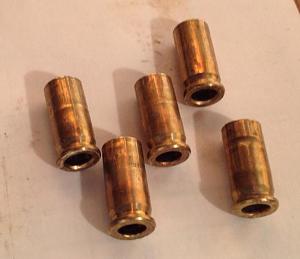After reloading about 100 or so .25 Cal Pistol, I had about 6 or 7 that had cases (brass) that were deformed (somewhat crushed) after seating the bullet (FMJ).
I pulled them from the group, to remove the bullet, deprime and throw away the casings. This is their second reloading.
I ran them through my RCBS Depriming/Case Forming die, (I want the primers), but when they came out the we're all back to a smooth walled case. They'll need a small amount of trimming, but look good. The case walls all measured 0.016 - 0.0175
I saved one that was the best of the 7 and didn't remove the primer to show you all, but the others were double what you see in the picture. I did remove the primer from it, but it still maintained its dent.
So, my question is, would you reload these cases with confidence?
How bad of a case have you "reformed" and reloaded with confidence and got good performance out of?
Thanks for the guidance.


|
   
   
|


|



 Reply With Quote
Reply With Quote











 USAF RET 1971-95
USAF RET 1971-95






